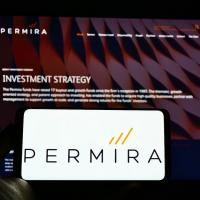Over half of the respondents in Preqin’s latest bi-annual survey allocate, or plan to allocate, to liquid alternative funds, further reaffirming that this asset class is here to stay.
As reported in Preqin’s latest Hedge Fund Spotlight report, 35 per cent of the more than 100 investors surveyed by Preqin in June said that they currently invest in liquid alternatives; either alternative UCITS (Europe) or alternative mutual funds (US). A further 16 per cent said that they planned to in the future. Separately, Preqin also surveyed more than 150 hedge fund managers to get their views on this growing space.
“Over the last 18 months liquid alternatives, based on what we’ve seen in our surveys, have become much more prevalent. There are more managers interested in launching products and more investors interested in them as well,” comments Amy Bensted, Head of Hedge Fund Products at Preqin.
Last month, a report by Deutsche Bank (From alternatives to mainstream: Part Two) noted that liquid alternatives had enjoyed a CAGR of approximately 40 per cent since 2008. This year, alternative UCITS grew 25 per cent through June to EUR236bn while ’40 Act alternative mutual funds grew by 18 per cent to over USD300bn having grown 60 per cent in 2013. Deutsche Bank forecasts that alternative UCITS has the potential to represent 30 per cent of hedge fund assets by 2019.
“This definitely backs up what we are seeing,” says Bensted. “It has been well documented that investors have focused on transparency in their hedge fund portfolios as well as increased liquidity. They don’t necessarily need 12, 14 per cent returns. They are happy with mid single-digit returns on a consistent basis and with better liquidity terms. That’s why liquid alternatives are now becoming popular.”
Preqin’s survey found that investors cited liquidity as their main reason (53 per cent) for investing in liquid alternatives, followed by increased transparency (31 per cent) and increased regulation (28 per cent).
“It’s a structure that investors are already quite familiar with in their portfolios. It gives them a sense of security and at the same time allows them to diversify their holdings. Investors are fee conscious, and these funds can offer a cheaper route into certain hedge fund strategies.
“We have also seen a resurgence of private wealth investors allocating to these products which is also driving growth,” observes Bensted.
Five years ago, people spoke about alternative UCITS in rather more dismissive terms. They were seen as a bit faddish, a bit flash in the pan. And whilst total AuM remains small compared to the offshore hedge fund market, the fact that assets continue to grow year-on-year shows that early scepticism was misplaced.
Preqin writes in its Hedge Fund Spotlight report that investors currently searching for liquid alternatives include OYSTER Multi-Manager. OYSTER is currently searching for a variety of hedge funds and UCITS vehicles to add to its portfolio and plans to allocate EUR200mn across 10 to 20 new hedge funds over the next 12 months. “Another fund of hedge funds manager, Madrid-based Asesores y Gestores Financieros Fondos, is also looking to add a mixture of hedge funds and alternative UCITS funds to its portfolio in the next 12 months,” writes Bensted.
Another reason for the growth in liquid alternatives is that there’s a certain level of dissatisfaction with the fees that investors pay. The option to invest in something cheaper, more transparent and liquid suddenly becomes a lot more compelling.
“What our survey shows is that this is no longer a transient asset class. It will continue to grow.More managers are planning to launch funds next year and that’s important; if there’s more choice for investors, more investors will be interested. These are not about to replace offshore hedge funds, however. What we are seeing is the increased options for hedge fund investment is helping the offshore market grow even further,” comments Bensted.
A virtuous circle as it were. Indeed, by opening up hedge funds to a wider cross-section of investors, liquid alternatives are effectively helping to democratise hedge fund investing. That’s a positive development for all concerned.
Preqin’s survey found that 22 per cent and 23 per cent of fund mangers reported that they offer alternative mutual funds and UCITS funds to their clients respectively, with 7 per cent each having done so in the 12 months leading up to July 2014. Moreover, 11 per cent and 14 per cent of firms said they planned to introduce either an alternative mutual fund or UCITS fund to their product range in the next 12 months.
The fact that investors seem more open to the idea of allocating to liquid alternatives shows how far the industry has come in the last six years. Indeed, the whole perception of what a hedge fund is has changed markedly. In 2008, 35 per cent of investors surveyed by Preqin said that hedge funds had failed to meet their expectations. Fast forward to 2014 and that figure had fallen to 28 per cent. Much of this is a result of performance expectations becoming more realistic.
“Back in ’08 they were expecting risk-adjusted returns of 8 to 10 per cent annualised, now it’s more like 6 per cent annualised,” says Bensted. “There’s been a fundamental change in how the hedge fund industry views itself and promotes itself to investors. P. The emphasis today is on consistent risk-adjusted returns, low correlation and low volatility.”
It’s not just liquid alternatives that investors are turning towards. Managed accounts continue to be favoured, more so by the largest institutional players with the deepest pockets. In this respect, 11 per cent of investors said they planned to increase their managed account allocations over the next 12 months compared to 7 per cent for the previous 12 months.
“Managed accounts have certainly become an important part of the hedge fund firmament over the last couple of years and large investors have preferred them over commingled funds because it removes co-investor risk and gives them much more control.
“Managers are still looking to set up more of these arrangements for investors. They know it’s going to be sticky capital so there are benefits to managers,” comments Bensted.
This illustrates the power shift in the hedge fund industry since 2008. The increasingly institutional audience for hedge funds hold all the aces. They can make demands on managers, which simply was not the case pre-crisis.
The added benefit, when comparing managed accounts to liquid alternatives, is that the strategy runs pari passu alongside the flagship fund (provided the investor doesn’t impose too many limitations). This means that as well as improved liquidity and transparency, investors also benefit from the full upside potential of the strategy.
“It depends on the investor. But the point is it gives them full control, which a liquid alternative product does not,” adds Bensted.
Bensted concludes with the following summary:
“We see liquid alternatives as here to stay. They serve an important purpose for different sections of the investor community and these products help to give investors more choice. We expect to see more money flowing in to hedge fund strategies as a whole and we broadly agree with the estimates that Deutsche Bank have forecast.
“The only fly in the ointment is that hedge funds, as they become regulated under AIFMD, might become the stamp of approval for cautious investors in a similar way to UCITS. This could potentially stymie the growth of alternative UCITS. We’ll have to wait and see how the new regulations will change the fund industry in the years to come.”
To read Preqin’s Hedge Fund Spotlight report in full please click here.






